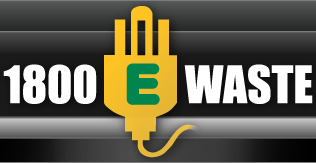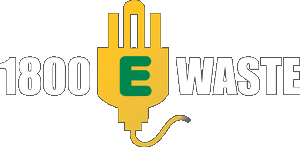 As Australia’s leading electronic waste company, we collect and recycle hundreds of items of ewaste every week. Many of our customers are trying hard to do the right thing with their obsolete computers and televisions; others just can’t wait to get rid of the fridge that’s been wasting space for months. Whatever the story and whatever your intentions, we are often asked the same question regarding our services….
As Australia’s leading electronic waste company, we collect and recycle hundreds of items of ewaste every week. Many of our customers are trying hard to do the right thing with their obsolete computers and televisions; others just can’t wait to get rid of the fridge that’s been wasting space for months. Whatever the story and whatever your intentions, we are often asked the same question regarding our services….
“What do you do when you collect our electronic waste?”
Once you’ve organised a collection with one of our sales team, the rest is up to us. The driver will arrive in the agreed two hour window and always call you on approach to make sure you’re ready. We will also re-confirm the price of your collection before he begins to load the truck. (If you’re not going to be home that’s no problem, just let us know where you’ll be leaving your electronic waste and we can organise payment over the phone. )
Once we’ve loaded up the day’s ewaste onto the truck, it’s taken to a private recycling facility within Australia to be recycled. This is where it gets complicated…
Electronic Waste – recycling laptops, computers and other electronic equipment.
Most electronic waste goes through a recycling system called a WEEE (Waste Electrical and Electronic Equipment), which not only recycles 95-98%, by weight, of all ewaste passed through it, but ensures that any data left on hard drives and memories are thoroughly destroyed too.
- Picking Shed – first all the items are sorted by hand and batteries and copper are extracted for quality control.
- Initial Size Reduction Process – items are shredded into pieces as small as 100mm to prepare the ewaste to be thoroughly sorted. This is also where the data destruction takes place.
- Secondary Size Reduction – the small debris is shaken to ensure that it is evenly spread out on the conveyor belt, before it gets broken down even more. Any dust extracted is disposed of in an environmentally friendly way.
- Overband Magnet – using magnets, steel and iron are removed from the debris.
- Metallic & Non-Metallic Content – aluminium, copper and brass are separated from the non-metallic content. The metallic can then be reused and resold as raw materials.
- Water Separation – water is used to separate plastic from the glass content. Once divided all raw materials can then be resold.
Cathode Ray Tubes – recycling CRT Monitors and Televisions.
Recycling Cathode Ray Tubes, most commonly found in computer monitors and old televisions, is more complicated than recycling most electronic waste. This is because toxins found within CRT’s are among the most dangerous – CRT’s have lead in the glass which can seriously harm the environment and our health if leaked into soil and water systems.
- Separation of Monitor Body and Cathode Ray Tube – firstly the front of the monitor is removed so that the tube can be removed from within. The shell is then recycled along with regular ewaste.
- Size reduction process – The tubes and screens are shredded down into small pieces. Any glass dust created in this process is disposed of carefully, in an environmentally friendly way.
- Metal Removal – the broken bits of glass are then passed under magnets, where iron and steel is extracted from the glass material. The remaining material is then passed through Eddy Currents, which removes any aluminium and copper. These materials are then collected and reused as raw materials.
- Washing Line – The remaining glass is then cleared of oxides, phosphors and dust extracts, leaving just clean glass to be sorted.
- Glass Sorting Line – the final stage of CRT recycling sorts the leaded glass from the unleaded glass. These can then both be used in the creation of new screens, which is called closed loop recycling.
As you can see, electronic waste recycling is not a simple process. Which is why 1800Ewaste organise it all for you, and all you need to do is place on easy phone call to one of our friendly customer service team. Recycling your electronic waste in this way might not be free, but it’s a small price to pay to avoid sending these toxic materials to landfill, polluting the environment for future generations – especially when they can so easily be recycled.
1800Ewaste – Australia’s leading electronic waste collection and recycling service.
At 1800Ewaste we only use recycling facilities within Australia where electronic waste and the dangerous chemicals it contains can be recycled in a controlled environment to ISO14001 standard.
Currently 95-98%, by weight, of all the materials we collect is recycled for future use. Our service is professional, fast and reliable; we’ll come to you, collect your Ewaste and deliver it to the appropriate recycling facility.
For more information please don’t hesitate to give us a call on 1800 392 783 or drop us an email to mail@ewaste.com.au


